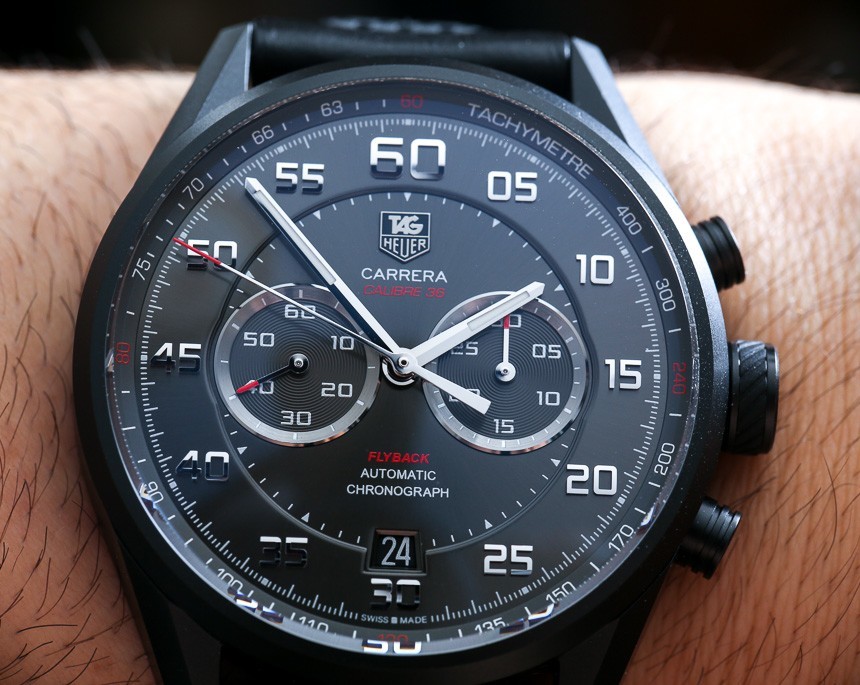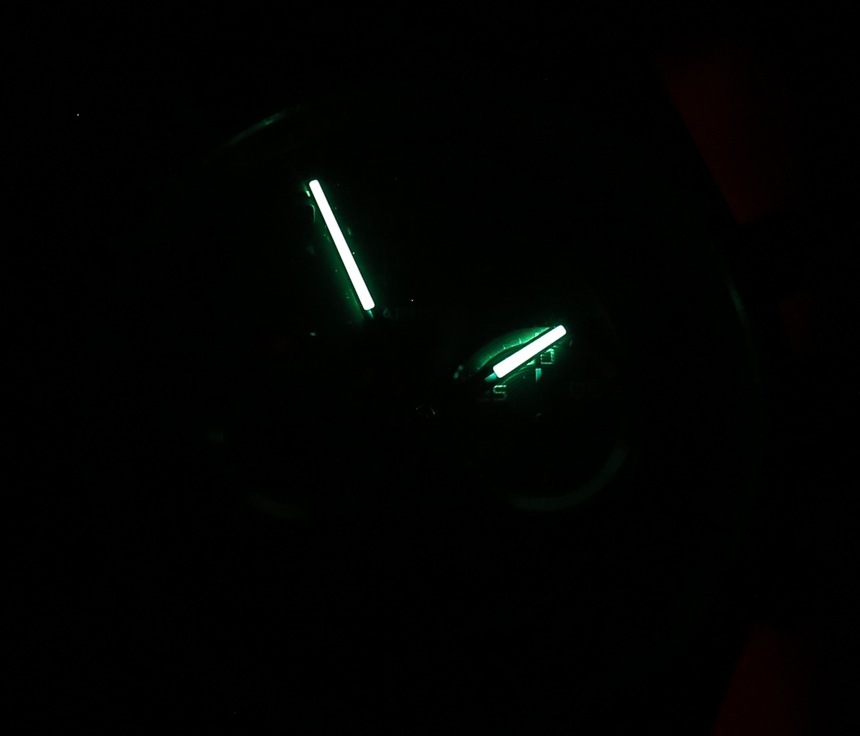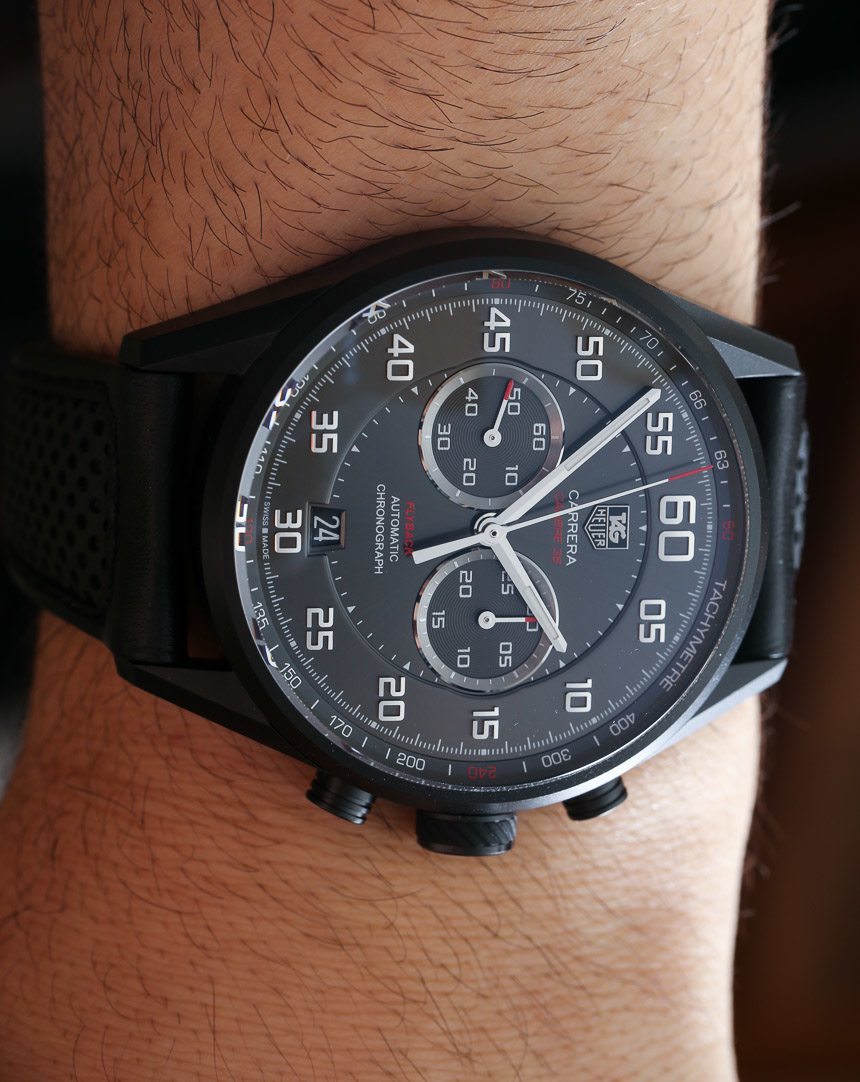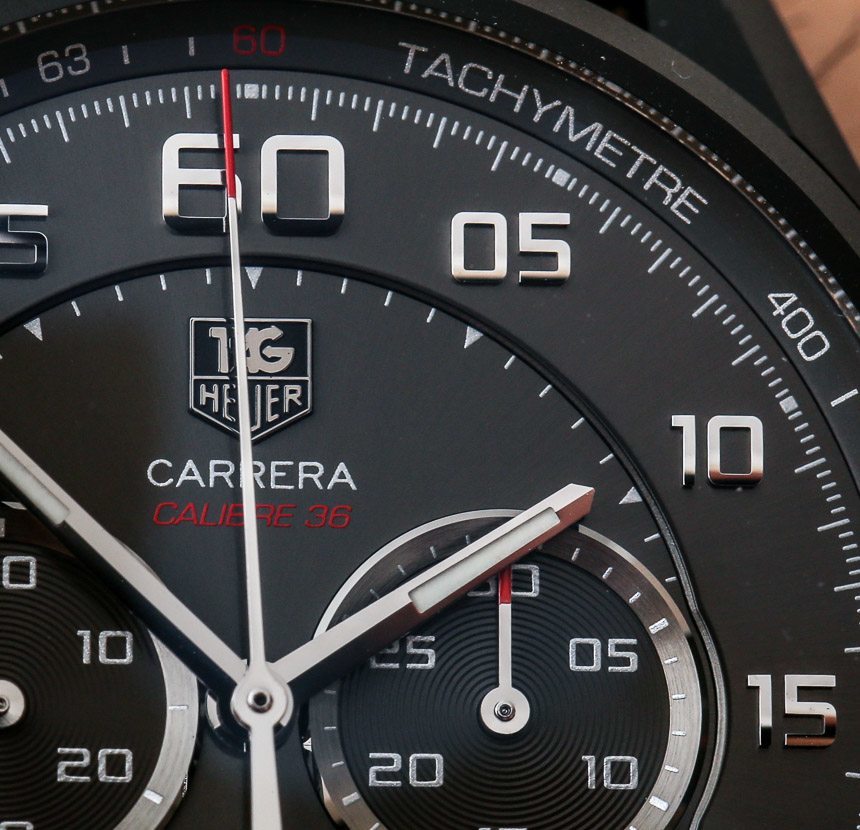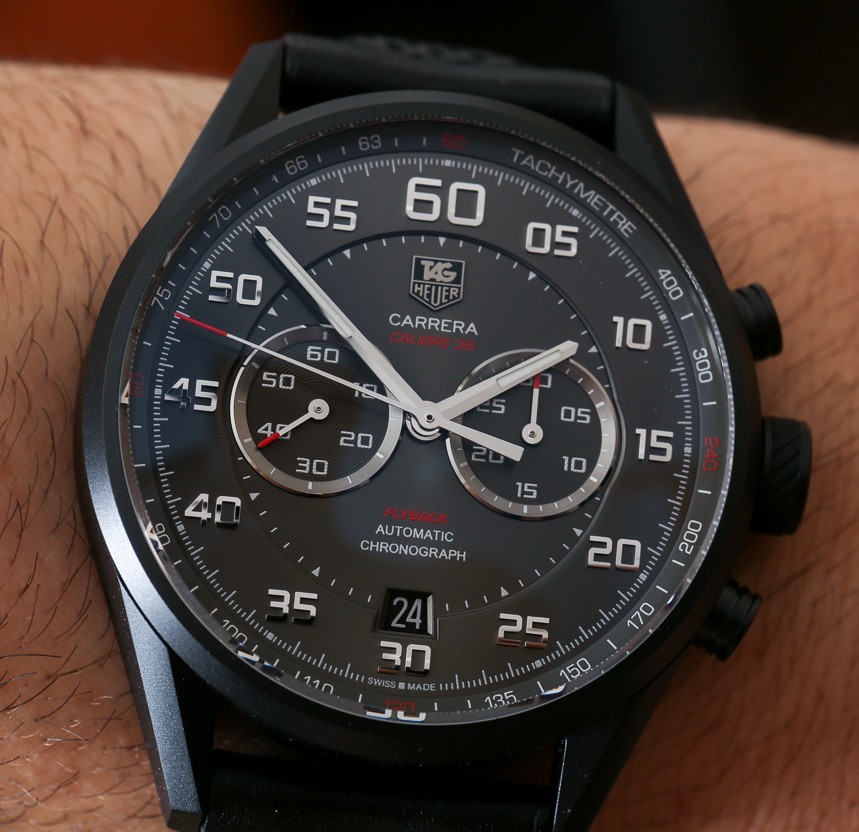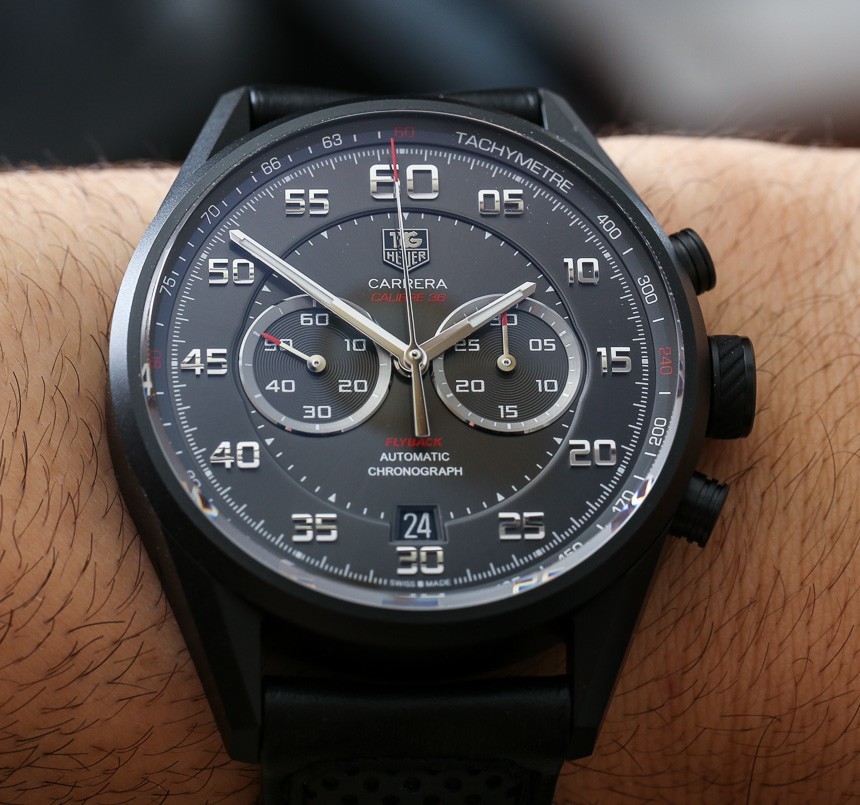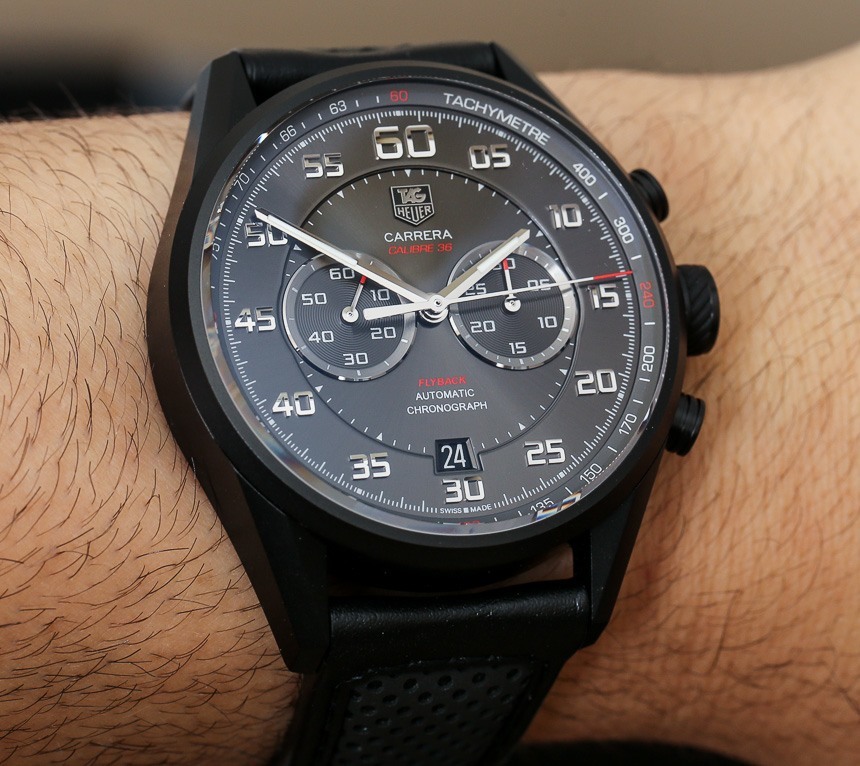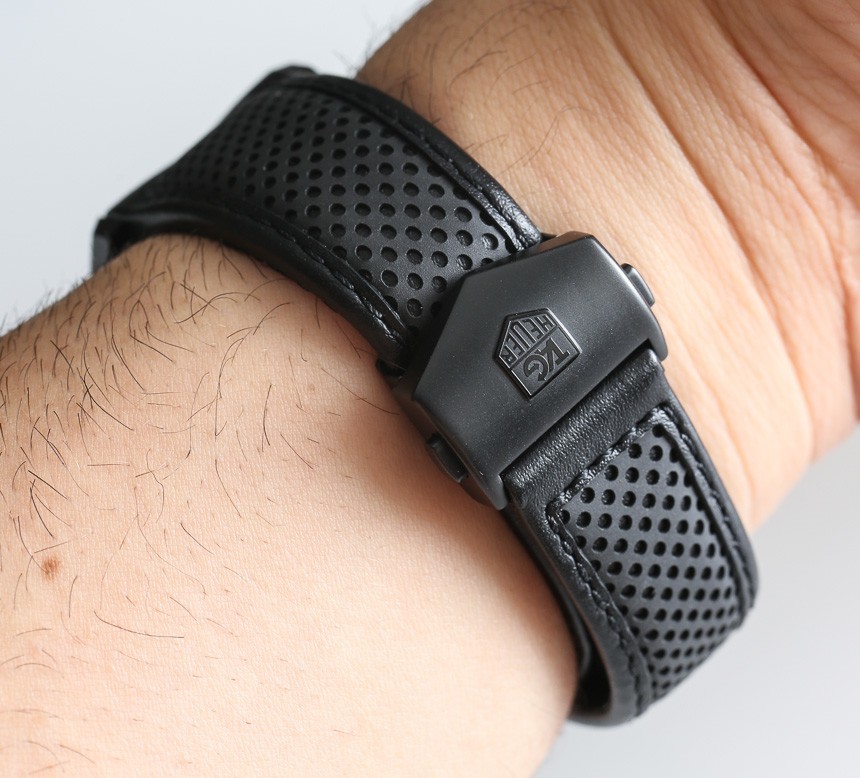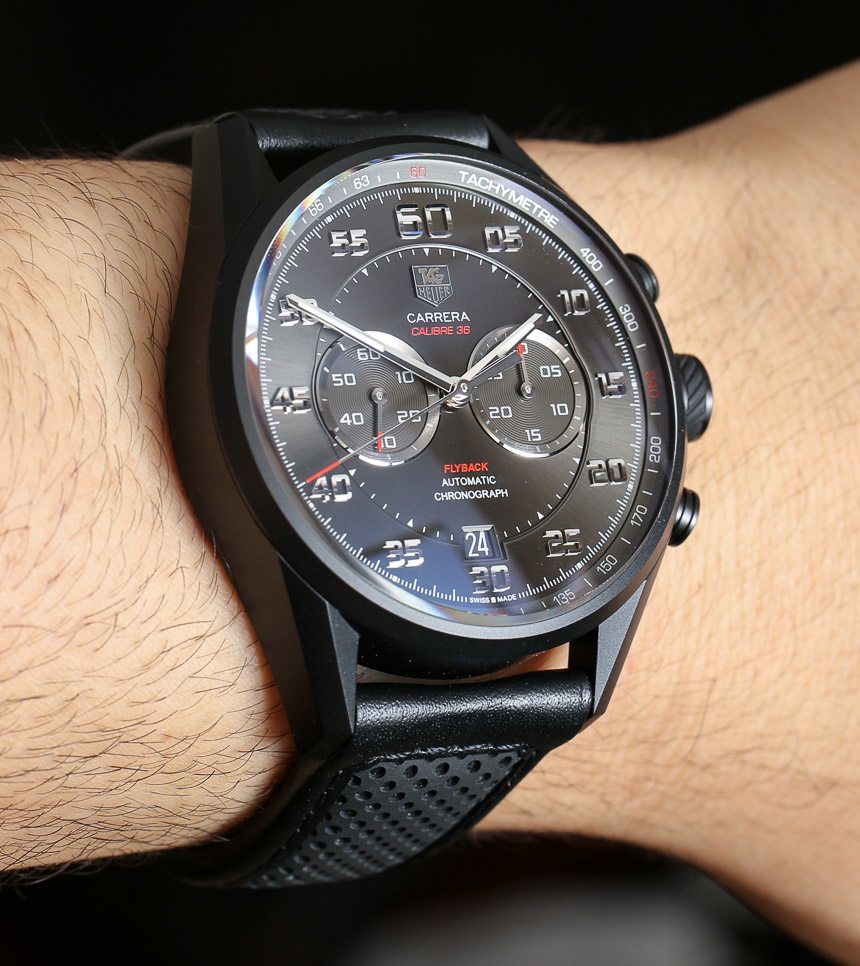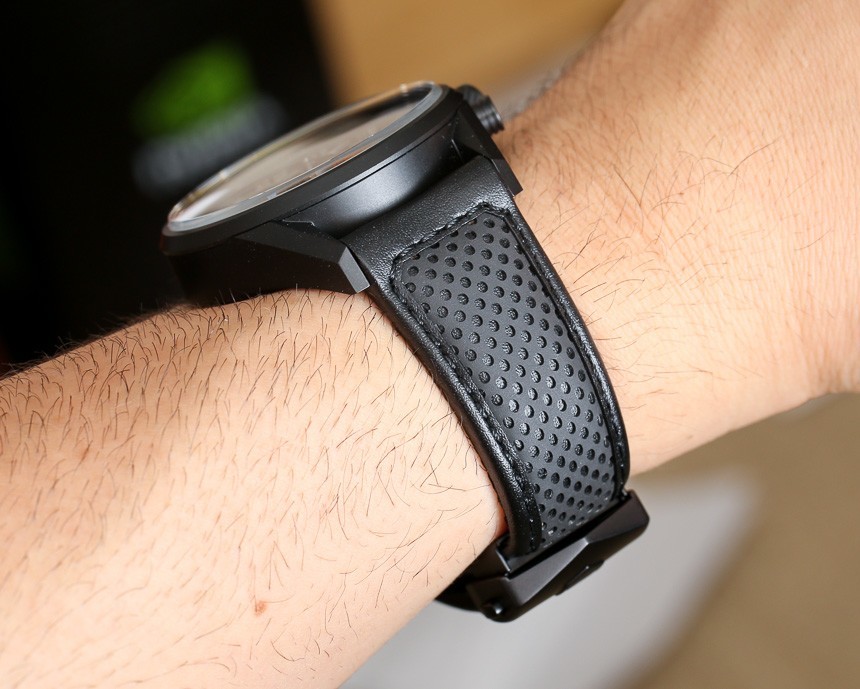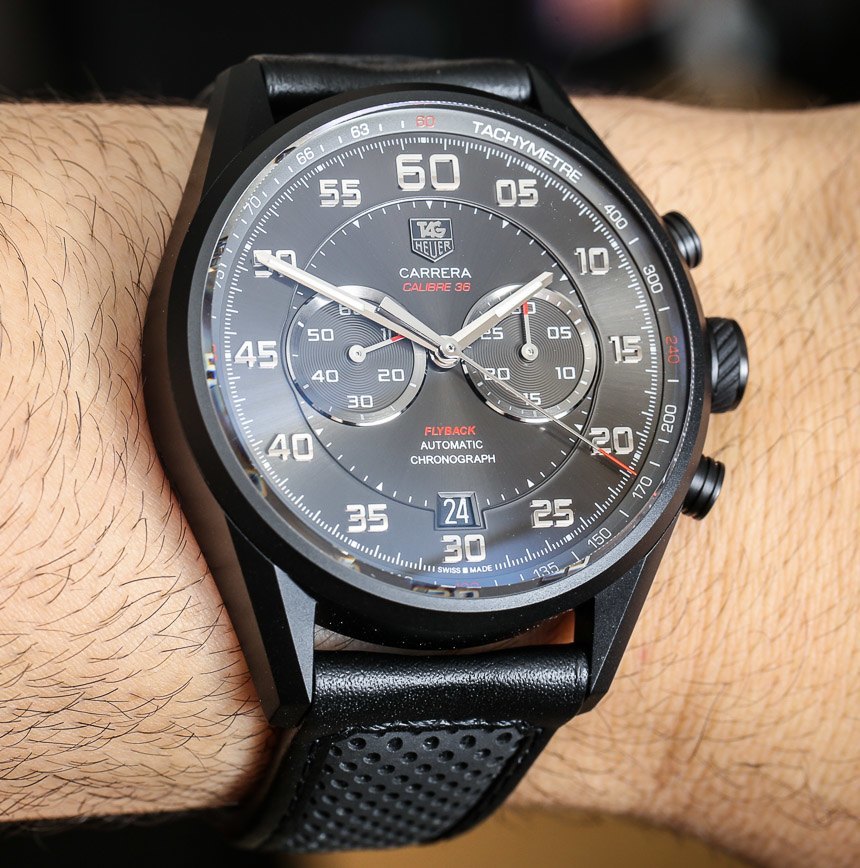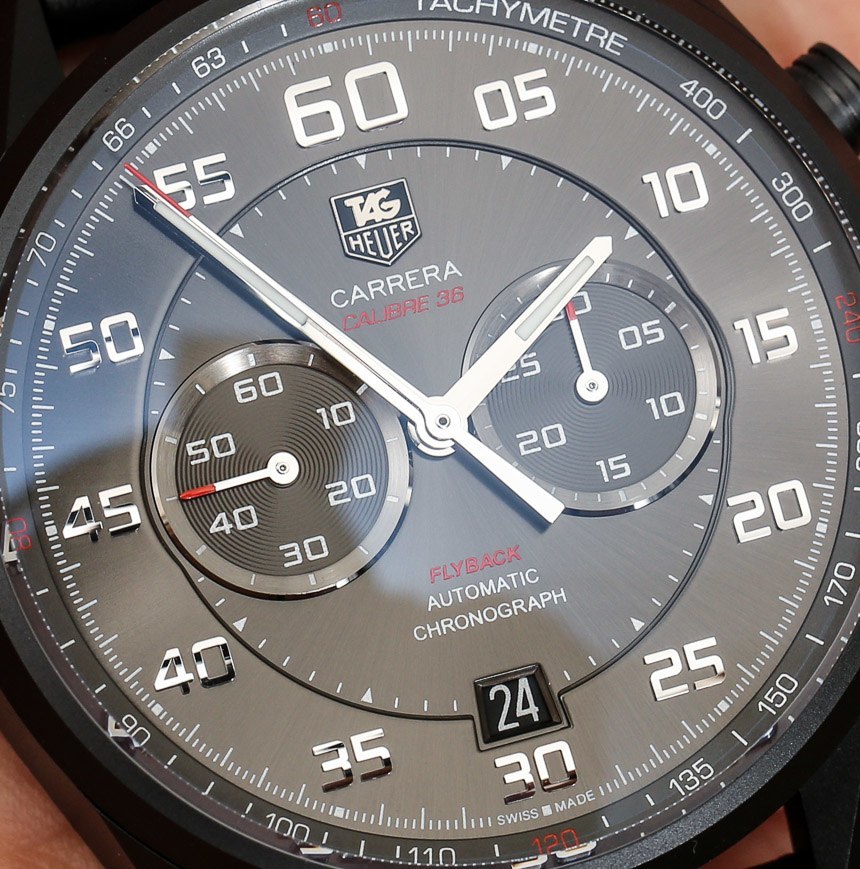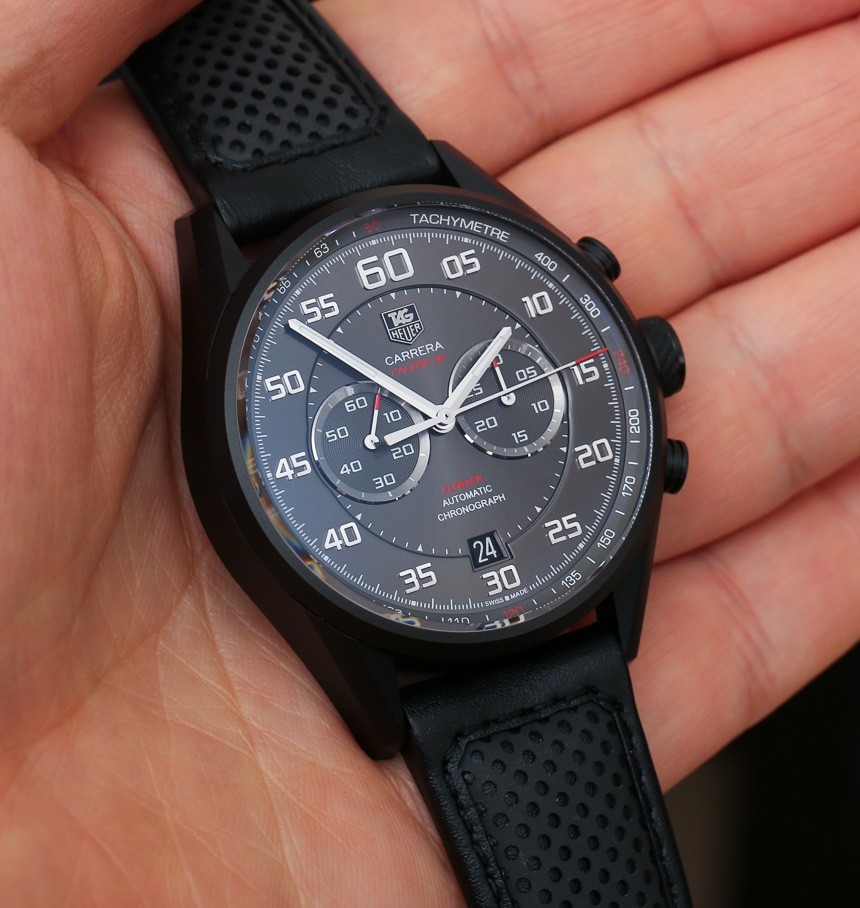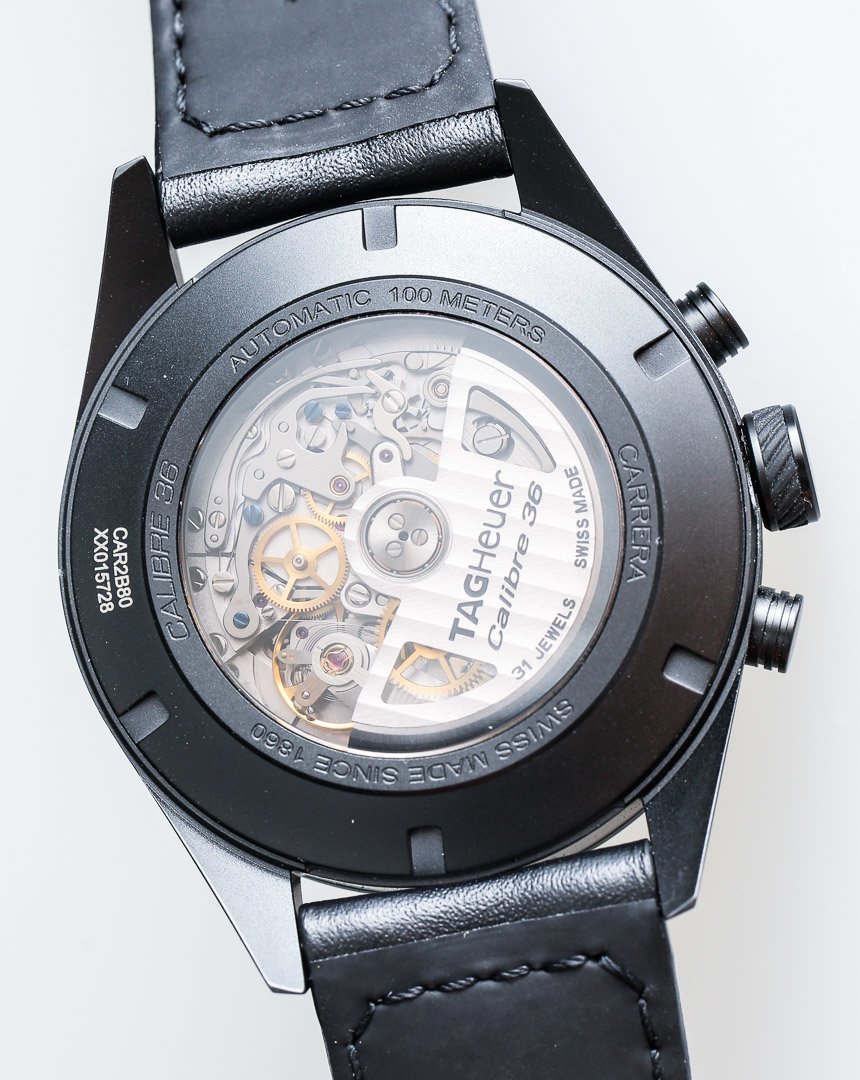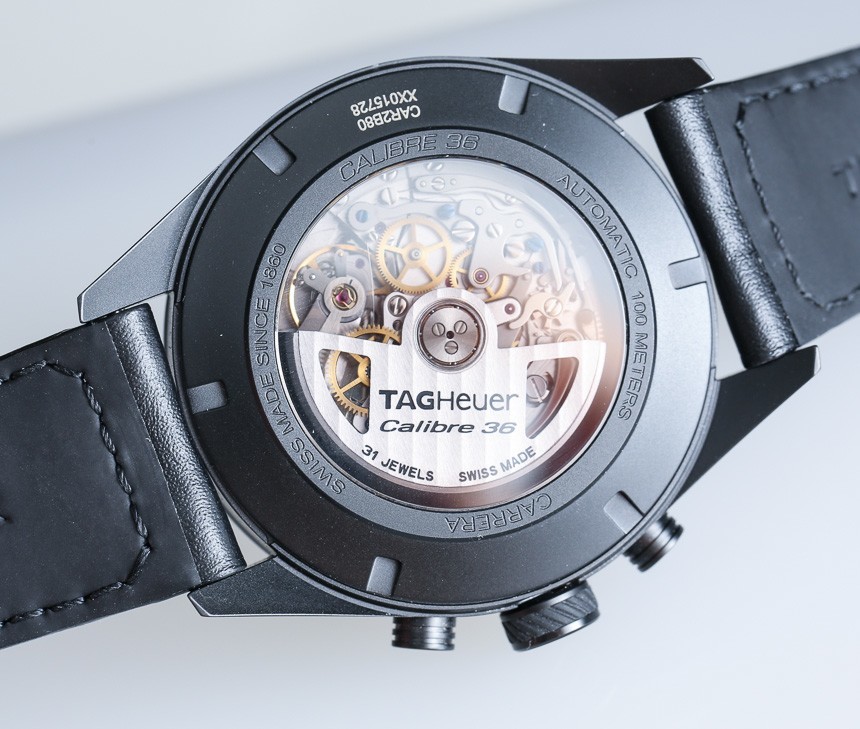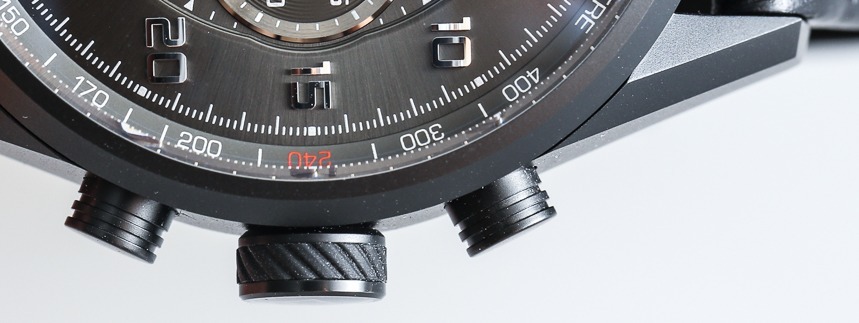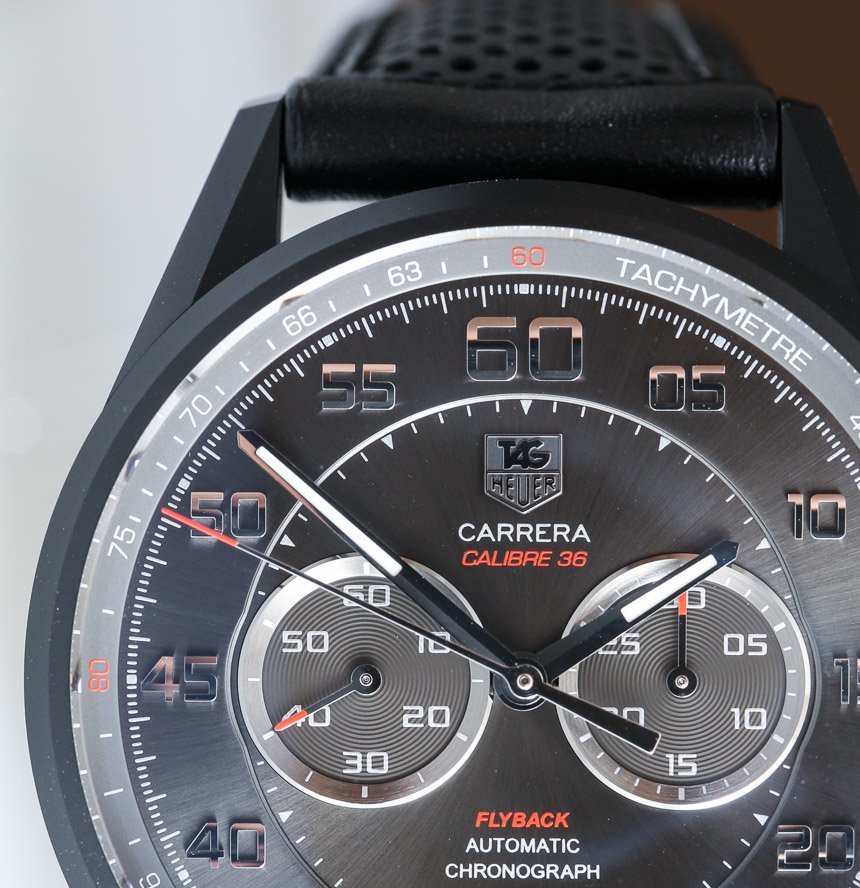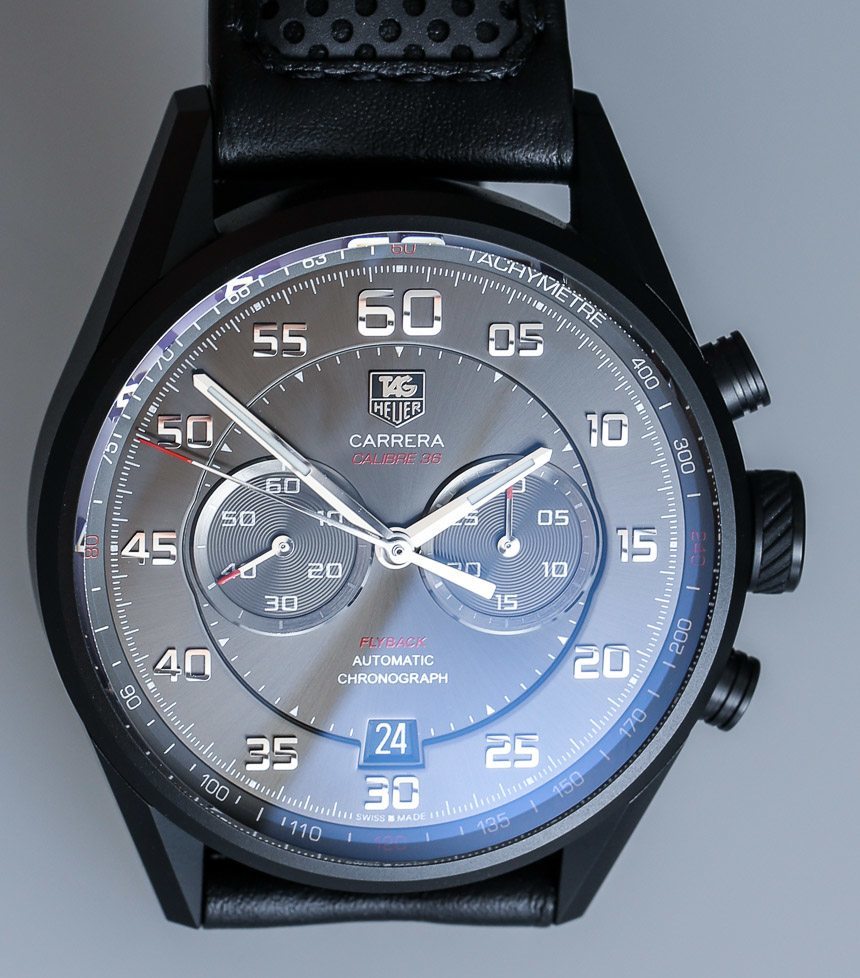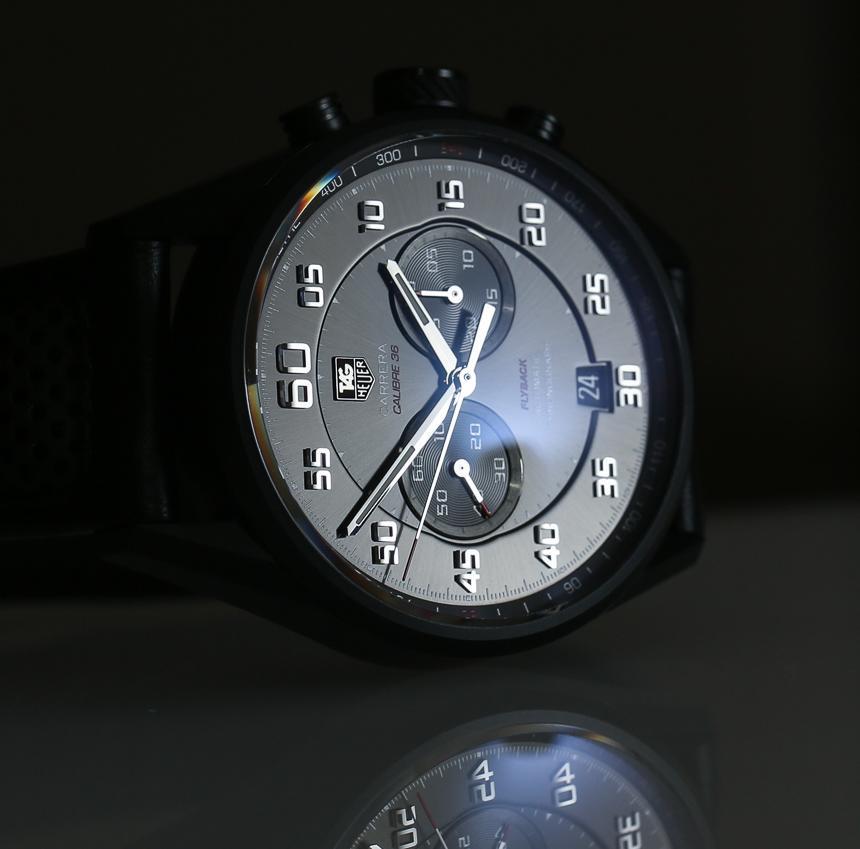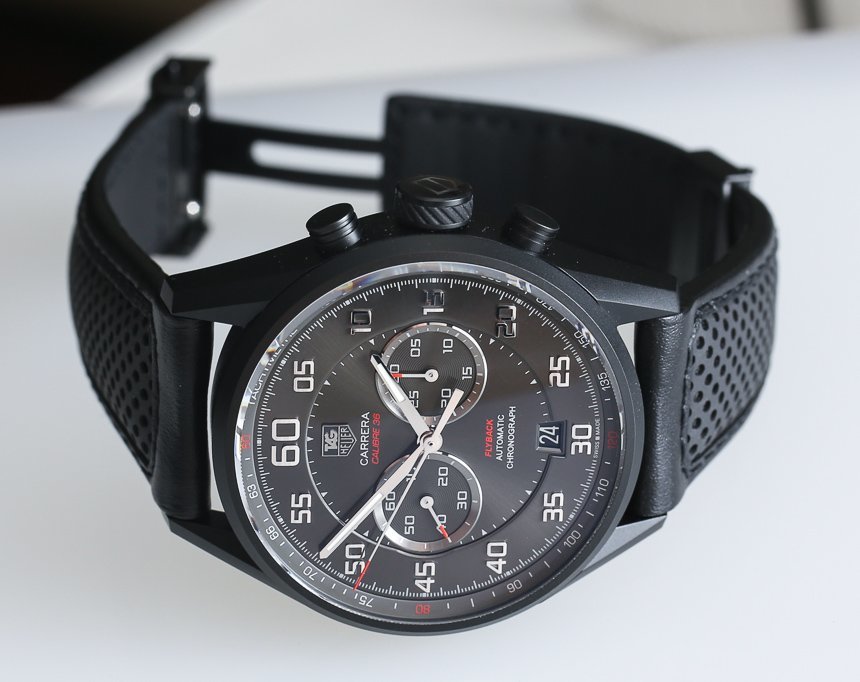
So, what makes the Calibre 36 special compared to other chronograph movements? That is a good question and the honest truth is that most people wouldn’t really be able to tell the difference. Watch nerds like me understand that the principle difference is in how fast the movement operates. The Calibre 36 is known as a “high-beat” movement because it operates at a frequency of 5Hz (36,000 bph). This is compared to 4Hz that most other chronographs operate. What does a higher frequency allow for? Well it allows for increased precision, as well as increased accuracy over time.
As related to a chronograph, a “high-beat” movement is particularly useful because it allows for a more precise time measurement reading. That means when you use the chronograph you can measure time down to 1/10th of a second. Compared to digital timepieces and even other fancier (more expensive) TAG Heuer watches that isn’t record-breaking, but it is an improvement over “most” mechanical chronograph watches. The bottom line is that the Zenith El Primero has proven itself as one of the successful watch movements that combines a high-end feel with a lot of reliable utility.
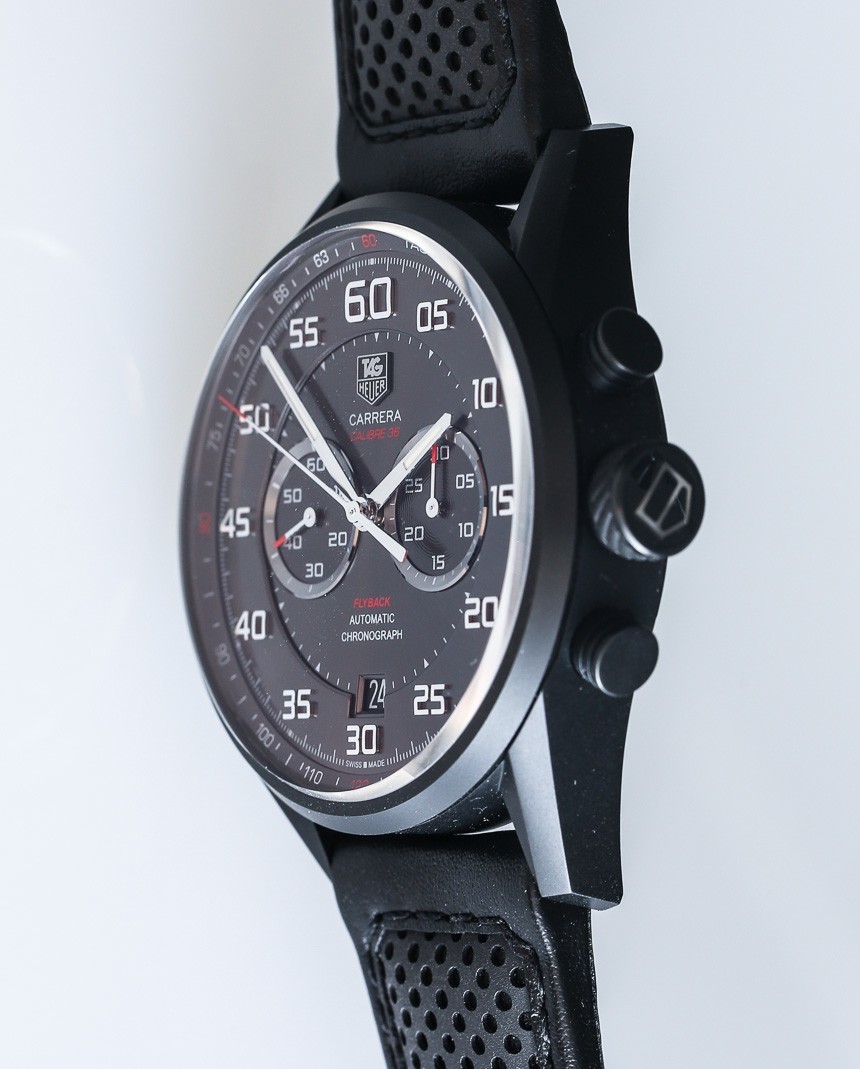
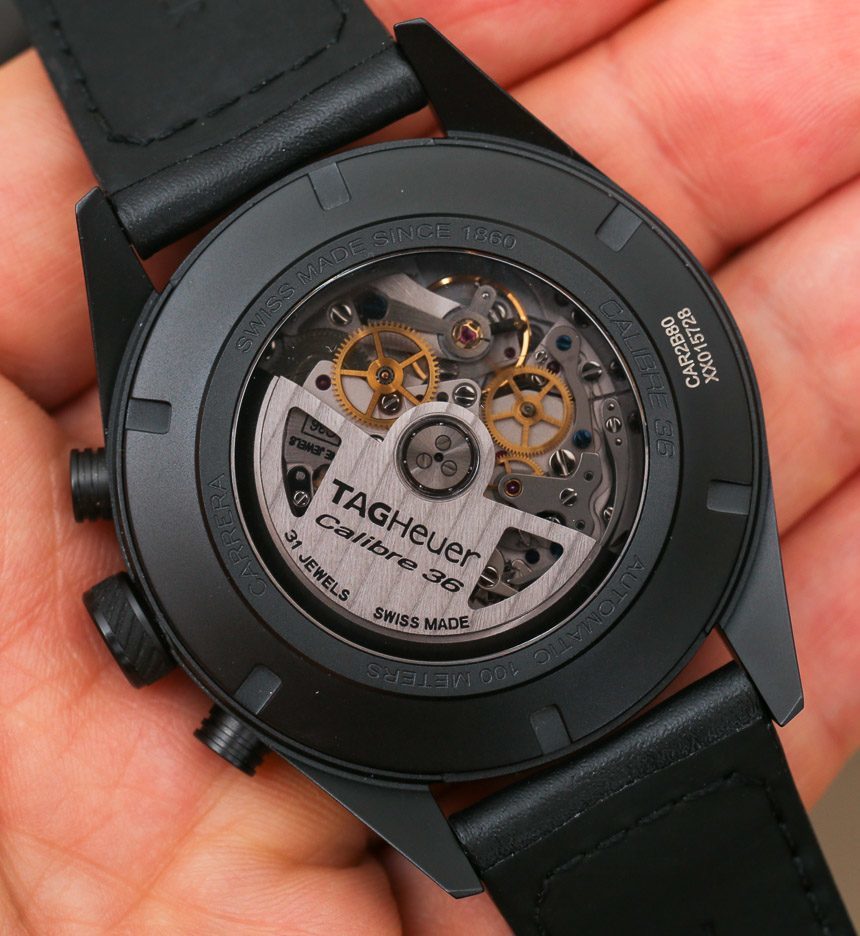
As applied to the Carrera Calibre 36, the El Primero is not altered that much. TAG Heuer decorates it in a unique way and it has a special automatic rotor, but enthusiasts familiar with the El Primero will recognize it for sure. Compared to the other Carrera Calibre 36 collection of watches, the Racing features a slightly smoked sapphire crystal caseback through which you can observe the movement.
The Calibre 36 Racing sees the traditional Carrera-style case in a 43mm wide size and offered in a matte finish. The base titanium is sandblasted and then coated with a titanium carbide coating to give it a deeper gray color. Of course, compared to the steel versions of the Carrera Calibre 36, the Racing version is lighter because of the titanium case. It is also among the less common Carrera chronograph models to be offered on a strap versus a metal bracelet.
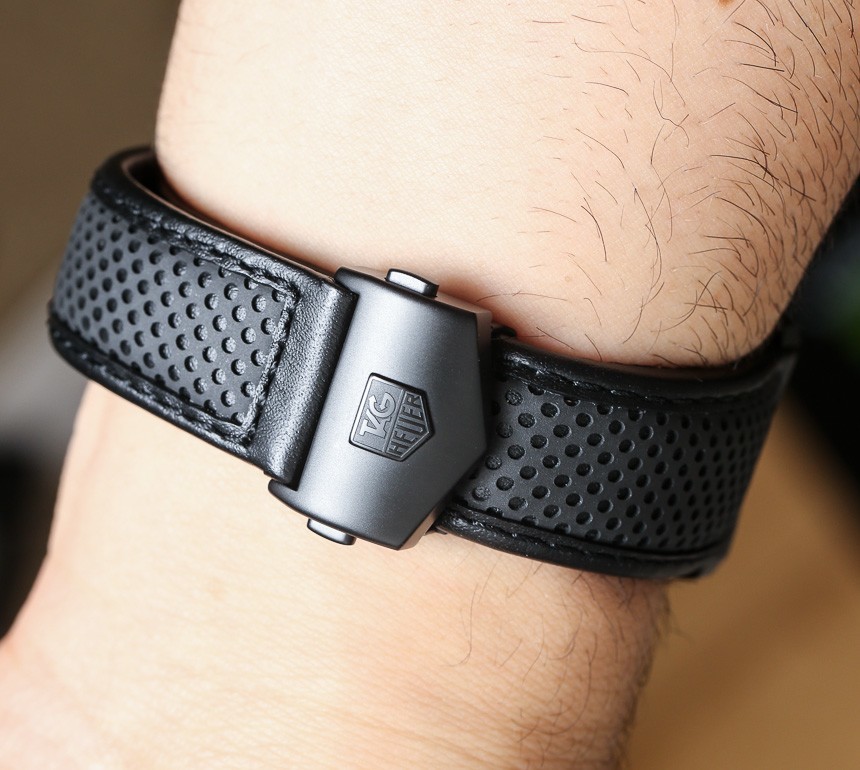
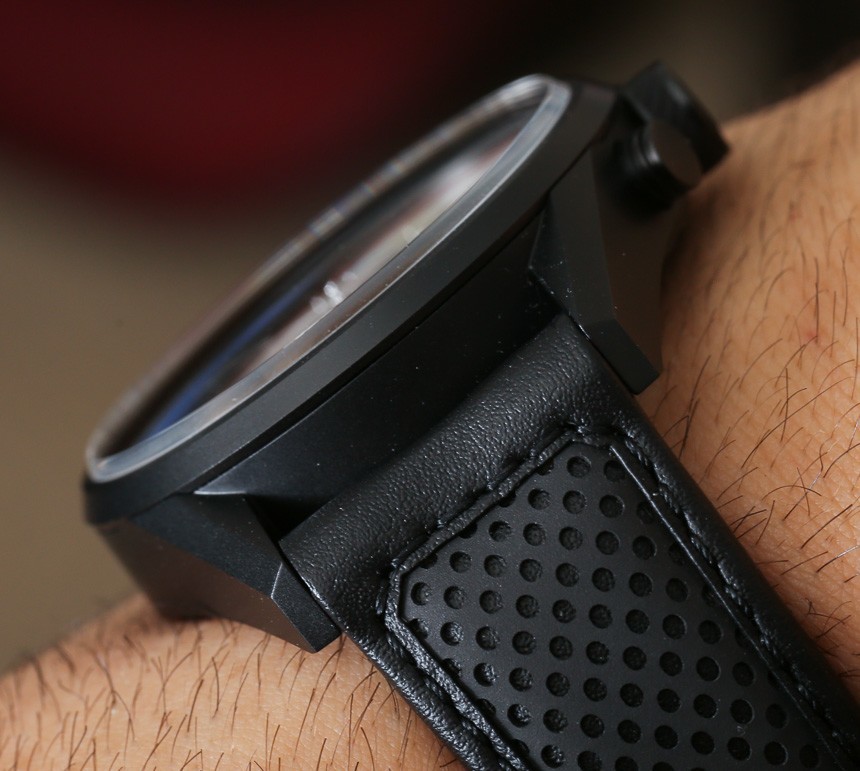
The soft leather strap has some perforated elements for style, and comes with a matching deep gray deployant clasp. It makes for a very comfortable fit, and overall the finishing on the case sees a rare matte (versus polished and brushed) version of the Carrera. The case is further water resistant to 100 meters. One of the best details on the case is the crown, which has a ring of rubber around it to make it more grippy when you need to adjust or turn it.
Over the last few years, TAG Heuer has paid a lot of attention to its Carrera collection and honestly as a consumer it would be easy to be confused about which ones are the best to buy. For instance, if someone asked me whether to get a Carrera with a TAG Heuer Calibre 36, 1887, or 1969 I am not sure what I would answer. TAG’s real way of differentiating the movements to all but the most dedicated movement aficionados is the design of the watch they are placed inside of. Thus, the Calibre 36 has a slight unique dial, even though some other modern Carrera models have similar ones.
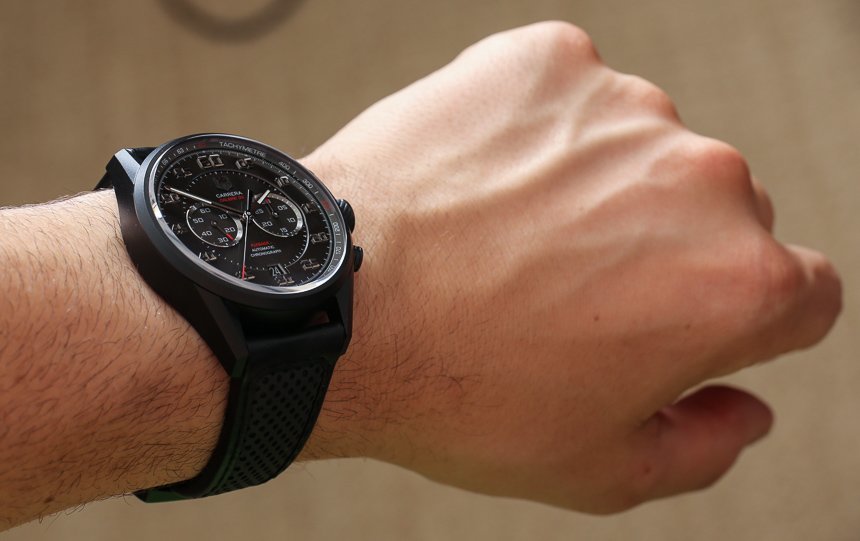
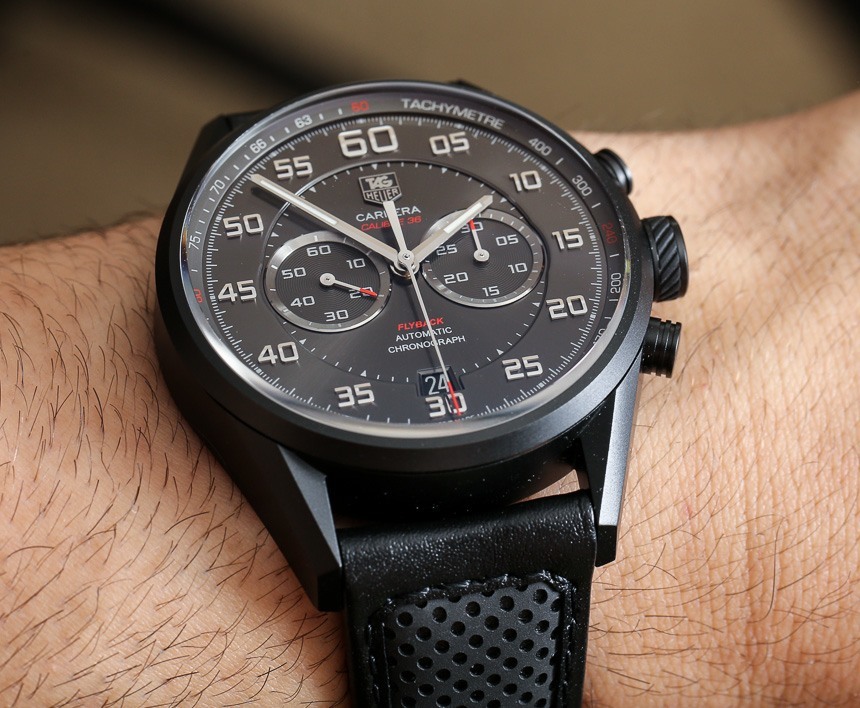
The dial took a while to get used to. It is certainly attractive, and very instrumental in its feel, but it isn’t what I would call classic. TAG Heuer took a risk to go with something new–which is a decision I respect. This bi-compax style chronograph leaves out an entire subdial making the chronograph measure only up to 30 minutes (versus 12 hours). That was a design decision more than anything else. The Chronograph subdials are also a bit narrow spaced given the size of the dial, but I got used to it quickly.
One thing I like a lot are the applied hour markers, that are actually represented as minute markers. Here TAG Heuer is paying homage to classic mechanical stopwatches. There is also an inner ring used as a scale for the hour hand, as well as some appreciated depth to the dial. The hour and minute hands are nicely shaped and easy to read. Those hands contain lume, but sadly the rest of the dial is devoid of any luminant (such as for the hour markers). The dial also contains the date located at 6 o’clock. Overall, the dial isn’t for everyone, but is modern, certainly fresh, and represents a design that I think will quickly grow on you. Best of all, it is symmetrical.
As I said before, deciding to get a Calibre 36 version of the Carrera has a lot to do with your understanding of the base El Primero movement, as well as your love of the design. The Racing version in titanium will be a bit less common than the steel ones for sure. While it is not without a few quirks, this is a very strong timepiece and shows how serious TAG Heuer is about appealing to the buyers of watches in the $5,000 plus segment. The TAG Heuer Carrera Calibre 36 Racing ref. CAR2B80.FC6325 has a retail price of $8,900. tagheuer.com
Necessary Data
>Brand: TAG Heuer
>Model: Carrera Calibre 36 Racing ref. CAR2B80.FC6325
>Price: $8,900
>Size: 43mm
>Would reviewer personally wear it: Yes
>Friend we’d recommend it to first: TAG Heuer or racing watch lover with a mature watch collection and appreciation of mechanical movements.
>Best characteristic of watch: TAG Heuer exhibits some welcome risk taking while producing a timepiece that very much fits into the traditional world of racing chronographs.
>Worst characteristic of watch: Dial might benefit from additional luminant and face design isn’t for everyone.

